When it comes to choosing between a pork chop vs chicken breast, what’s the healthier choice?
You might have heard that white meat is healthier than red, but is it always true? And when comparing within the same category, like a pork chop and a chicken breast, what are the most important differences?
In this comprehensive guide, we’ll dive deep into the nutritional profiles of these two popular cuts of meat. We’ll compare their calorie content, protein, fats, vitamins, and much more.
We’ll also give you tips on how to select the leanest cuts, the best cooking methods, and how to store and handle your meat safely.
Let’s get started!
SEE ALSO: Pork Cutlet vs Pork Chop: Main Differences Explained
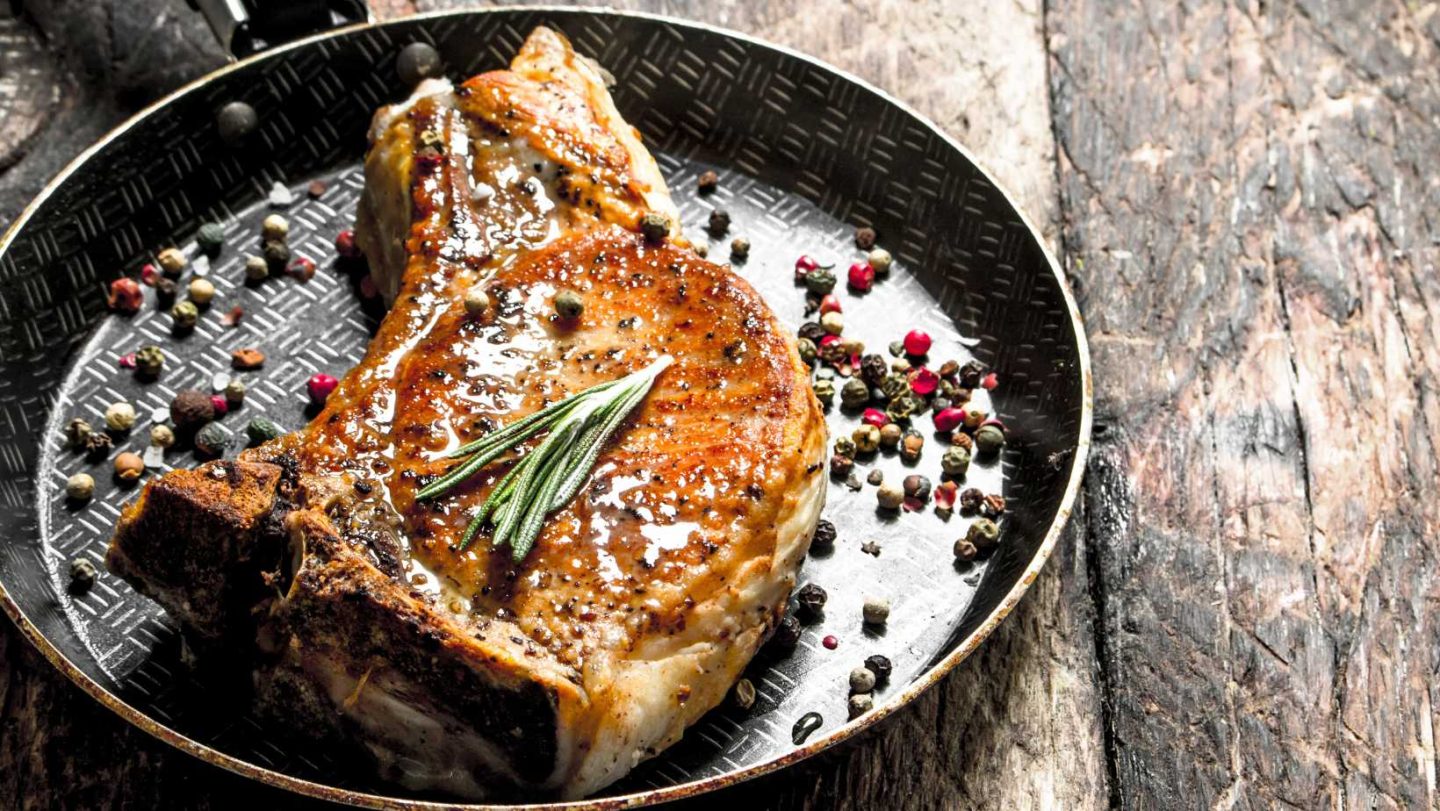
Pork Chop vs Chicken Breast: Which is healthier?
Short Answer
The battle between pork chop and chicken breast isn’t just a culinary one. For health-conscious individuals, it’s also about their nutritional profile.
In a nutshell, skinless chicken breasts are generally seen as the healthier option, as they have fewer calories, less total fat, and a high amount of protein.
However, lean cuts of pork, particularly bone-in pork chops, can also be a nutritious choice if cooked properly.
Remember, the health value can vary based on the cut of meat, the cooking method, and the accompanying dishes.
Understanding Different Cuts
In the culinary world, the term ‘cut’ refers to the type of meat obtained from different parts of the animal. Different cuts can significantly influence the nutritional content and taste.
For instance, chicken legs and skinless chicken thighs can be fattier than chicken breasts, but they also offer different flavors and textures.
Similarly, in the world of pork, boneless pork chops, pork loin chops, and sirloin roast each bring something unique to the table. Some parts of the pig, like the pork belly, are more fatty and might not be the best choice if you’re looking for leaner options.
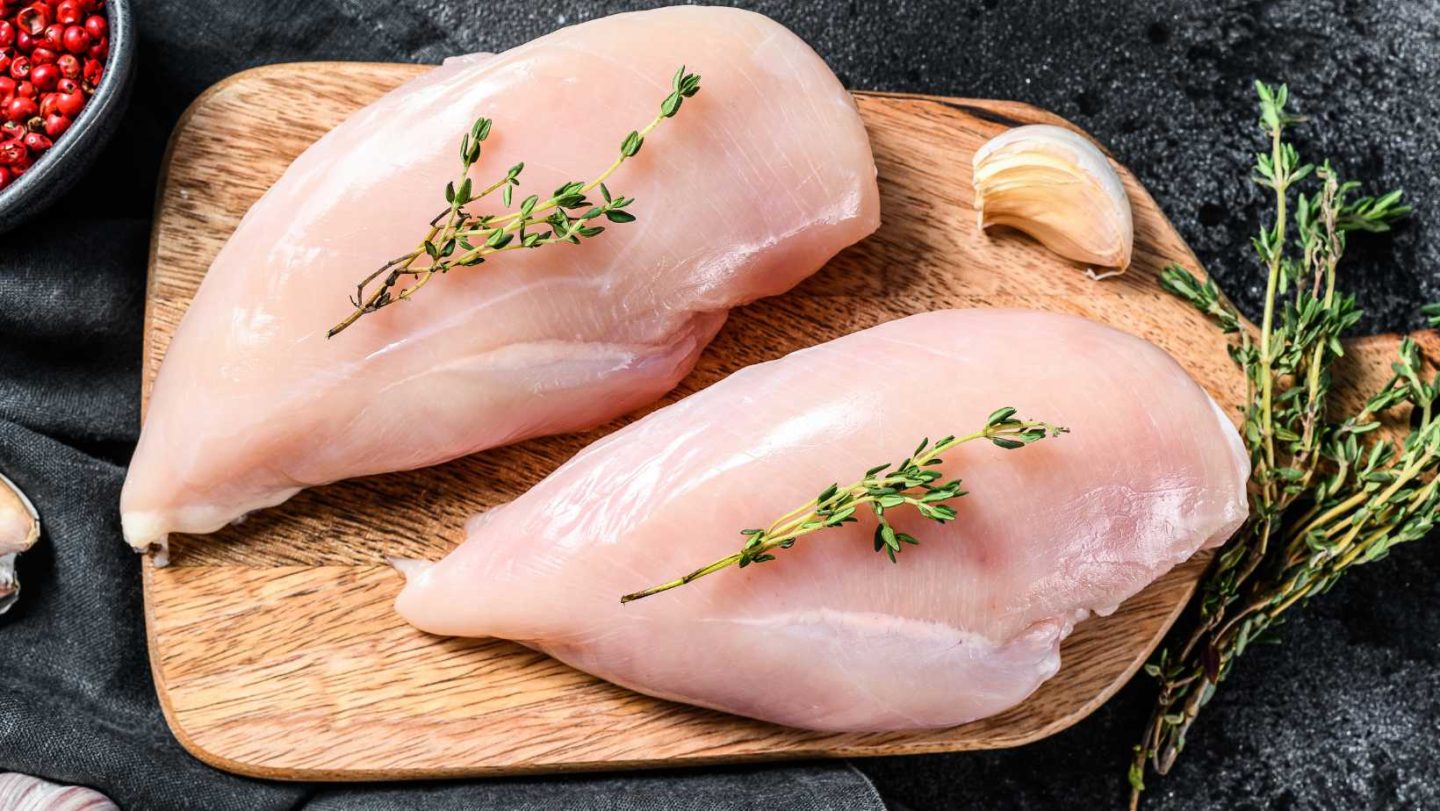
Pork Chop vs Chicken Breast: Leanest Cuts
The leanest option between pork chops and chicken breast essentially comes down to the cut and the preparation.
Lean Meat Selection
Choosing lean meats is one of the most important tips for anyone looking to adopt a healthier diet.
Lean meats are those that contain less than 10 grams of total fat, 4.5 grams or less of saturated fat, and fewer than 95 milligrams of cholesterol per three-ounce serving, according to the American Heart Association.
Both skinless chicken breast and lean cuts of pork fit these criteria.
Skinless Chicken Breast
Skinless chicken breast is usually the leanest option. With the skin removed, the chicken breast holds a high protein content and low fat content, making it an ideal choice for those seeking a low-fat, high-protein diet.
Even if you’re roasting or grilling, it’s best to remove the skin either before or after cooking to keep the fat content low.
Boneless Pork Chops
On the pork side, boneless pork chops, particularly loin chops, are considered one of the leanest cuts of pork. Much like chicken, removing any visible fat can reduce the fat content, making it a healthier choice.
However, even the leanest pork chop tends to have more fat and calories compared to a skinless chicken breast.
Pork Tenderloin
Also worth mentioning in the lean pork category is the pork tenderloin. This cut, not to be confused with the loin, is one of the leanest cuts of pork available. It’s slightly more expensive than chops but very lean and tender.
A three-ounce serving of roasted pork tenderloin contains less fat than the same serving of skinless chicken breast.
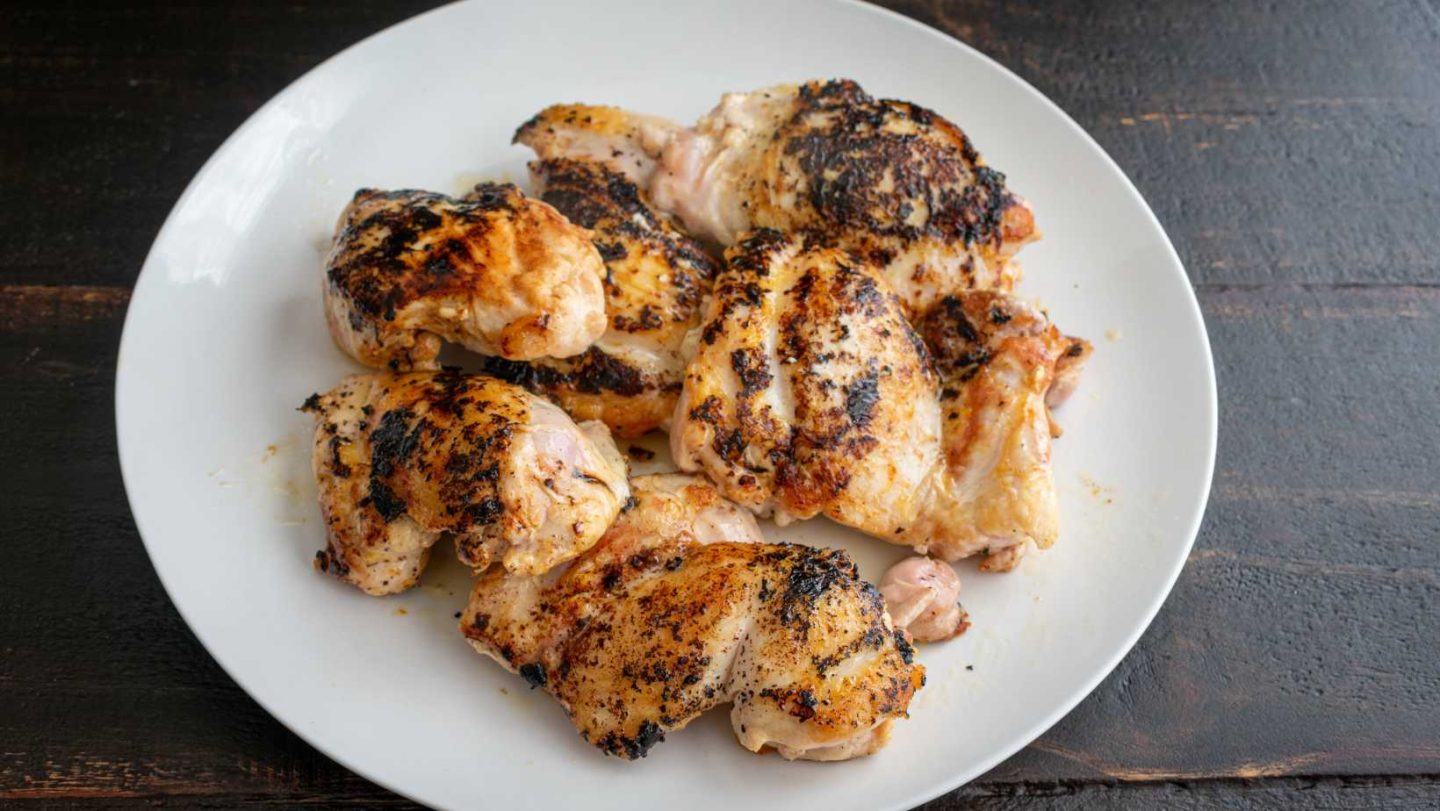
Pork Chop vs Chicken Breast: Nutritional Information
The nutritional profiles of pork chop and chicken breast are quite different, each offering its own set of benefits. Understanding these differences can help you make informed decisions based on your dietary needs and preferences.
Protein
Both pork chops and chicken breast are a great source of protein.
Though chicken breast takes a slight lead, the difference is small, and both can play a substantial role in fulfilling your daily protein needs.
Fat
In terms of fat, there is a more noticeable difference:
If you’re aiming to reduce fat intake, the chicken breast is the clear winner.
Both chicken breasts and pork chops contain essential fatty acids that support cell structure and skin health, such as linoleic acid, but they should be consumed in moderation as part of a balanced diet.
For instance, skinless chicken breasts are generally leaner, while pork chops may have a higher fat content, especially fattier cuts like rib chops.
Calories
Calorie content is another important aspect to consider:
Again, for those watching their calorie intake, chicken breast comes out ahead.
Vitamins and Minerals
Both chicken breasts and pork chops are rich in various B vitamins and minerals:
In essence, if you’re focusing on certain vitamins or minerals, one may have an edge over the other. For instance, pork chops have a higher amount of thiamin, while chicken breast is superior in vitamin B6.
Fatty Acids
Both chicken breasts and pork chops contain fatty acids, including both saturated and unsaturated fats:
Chicken Breast: It is recognized for being a lean source of protein with a lower fat content. However, it does contain a mix of saturated and unsaturated fatty acids. The unsaturated fats include both monounsaturated and polyunsaturated fats, comprising essential omega-6 and omega-3 fatty acids, albeit in small quantities. The majority of the fat in chicken breast is monounsaturated and polyunsaturated, with a smaller portion being saturated.
Pork Chops: They also contain a blend of saturated and unsaturated fatty acids. The specific composition can vary depending on the cut and how much visible fat is present. Pork contains both monounsaturated and polyunsaturated fats, including omega-6 and omega-3 fatty acids, although not in as high quantities as some other foods. They also contain saturated fats which should be consumed in moderation due to its association with higher cholesterol levels and increased risk of heart disease.
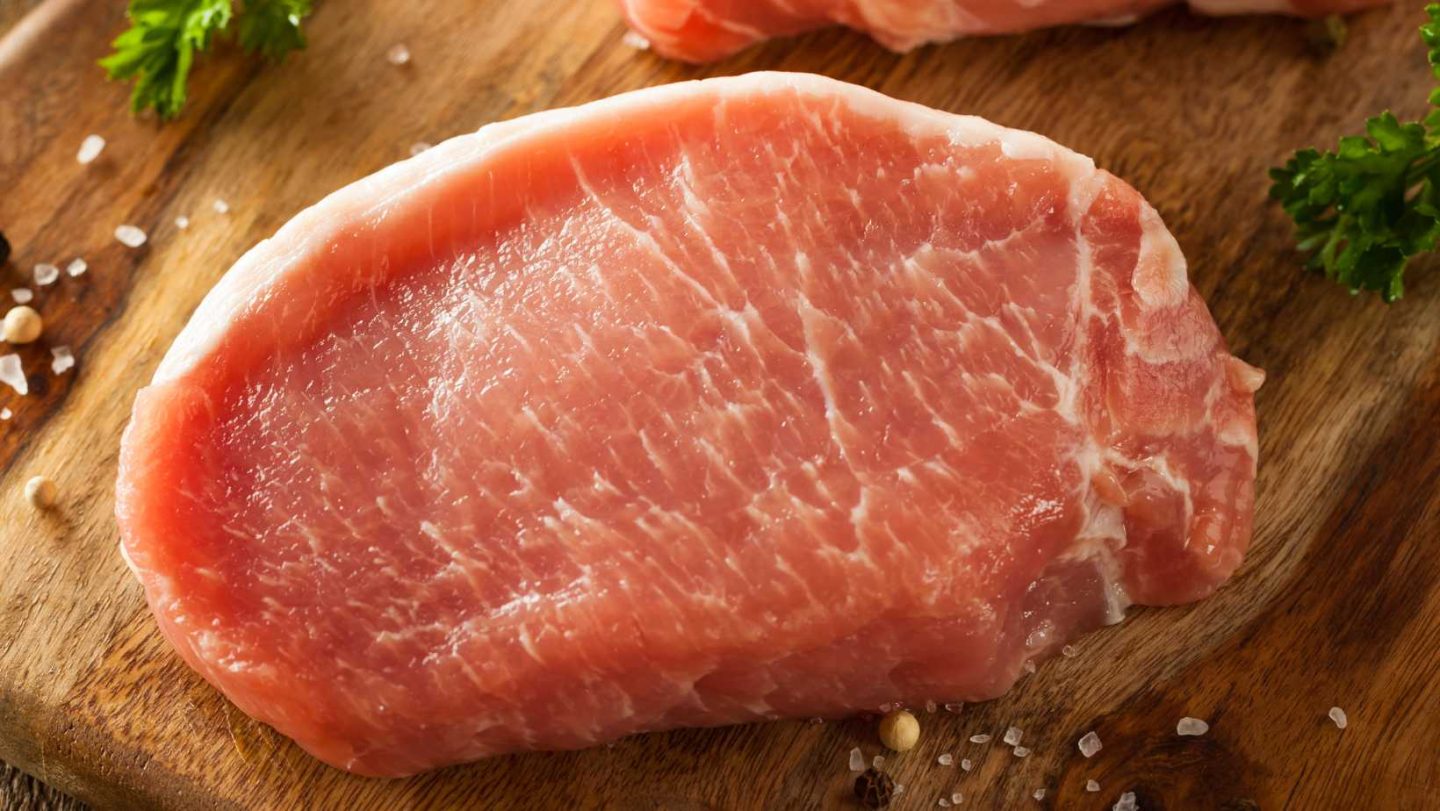
Pork Chop vs Chicken Breast: Comparison Chart
Nutritional Value at a Glance
Here’s a comparison chart showing the basic nutritional differences between a pork chop and a chicken breast (values per 100 grams):
| Pork Chop (Lean Part) | Skinless Chicken Breast | |
|---|---|---|
| Calories | 197 | 165 |
| Protein | 26g | 31g |
| Fat | 7g | 3.6g |
| Saturated Fat | 2.5g | 1g |
| Sodium | 57mg | 74mg |
Please note that the above values might vary slightly based on the exact cut of meat and cooking methods used.
Most Important Differences
While both pork chop and chicken breast are good sources of protein, they do differ in fat content and calorie count. Chicken breast is leaner and has fewer calories, making it a preferred choice for those watching their weight or maintaining a low-calorie diet.
However, pork chops, particularly the lean cuts, aren’t far behind. While they have slightly more calories and fat, they’re still a healthy option when you’re craving red meat, and they contribute to a varied diet.
How to Pick the Best Cuts of Meat
Pork: Parts of the Pig, Bone-in Pork Chops, and More
While shopping for pork, look for cuts with “loin” or “round” in their name for the leanest meats. If possible, choose bone-in pork chops as they tend to have less fat.
Avoid cuts with excessive marbling, which indicates a higher fat content.
Chicken: From Chicken Legs to Skinless Chicken Thigh and Cutlets
Choose skinless chicken breasts for the lowest fat option. If you want a bit more flavor, skinless thighs and chicken cutlets are good alternatives. They have slightly more fat but also more taste.
Avoid breaded or fried chicken, as these cooking methods add extra calories and unhealthy fats.
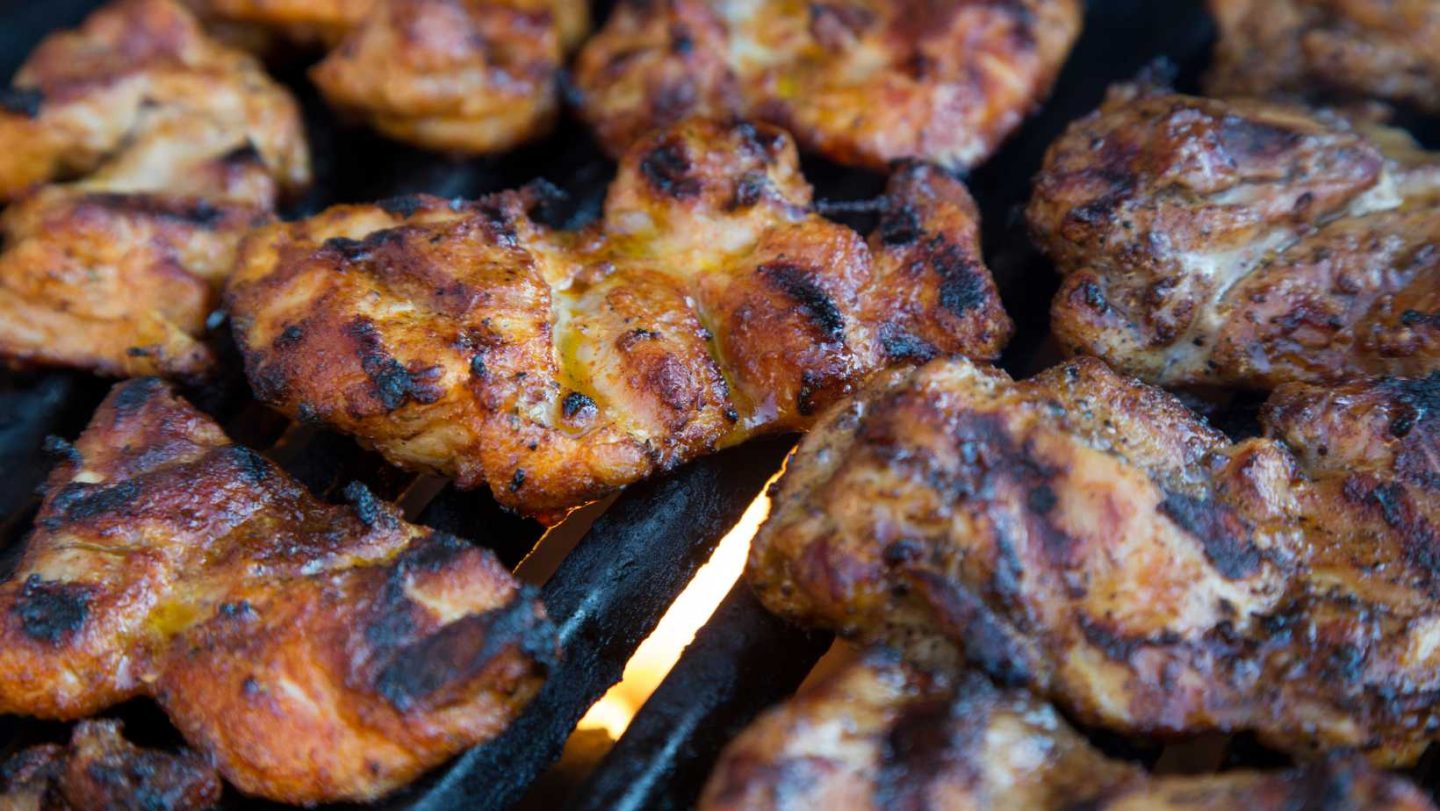
Best Cooking Methods, Temperatures, and Cook Times
Choosing the best cooking method for your pork chops or chicken breasts can greatly influence not only the taste and texture but also the nutritional value of the dish. Here are some popular and healthy methods to consider:
Grilling
Grilling imparts a wonderful smoky flavor to both chicken breasts and pork chops and can help retain the lean protein and other nutrients found in these cuts. It’s also a method that doesn’t require adding a lot of extra fat. Here are some guidelines:
Chicken Breast
- Heat Level: Preheat your grill on medium-high heat, around 375-450°F. A higher heat helps to sear the outside of the chicken, locking in juices and flavor.
- Internal Temperature: Use a meat thermometer to ensure the chicken breast reaches a safe internal temperature of 165°F.
- Grilling Time: Depending on the thickness, most chicken breasts will take approximately 6-7 minutes per side. However, it’s crucial to use a meat thermometer to ensure the chicken is fully cooked.
Before grilling, marinate the chicken breast in a mixture of olive oil, lemon juice, garlic, and herbs for a juicy, flavorful result.
Pork Chops
- Heat Level: Start with high heat to sear the pork chops, and then lower to medium heat (around 350°F) to finish cooking.
- Internal Temperature: Cook until the internal temperature reaches between 145°F (for medium-rare) and 160°F (for medium), as recommended by the USDA.
- Grilling Time: For a 1-inch thick pork chop, grill for approximately 4-5 minutes on each side for searing, and then another 8-10 minutes on medium heat. Adjust the time as needed for thicker or thinner chops.
Baking
Baking is an excellent method to ensure your chicken breasts or pork chops are cooked thoroughly while retaining their juiciness and flavor. It also allows for the addition of various herbs and spices that can create a delightful mix of tastes.
Chicken Breast
- Heat Level: Preheat your oven to a higher temperature, around 450°F. This high heat helps to sear the outside, keeping the chicken juicy.
- Internal Temperature: The chicken breast should reach an internal temperature of 165°F.
- Baking Time: Depending on the thickness, a chicken breast usually takes around 15-20 minutes to bake at this temperature.
Pork Chops
- Heat Level: Preheat your oven to a moderate temperature, around 375°F.
- Internal Temperature: The pork chops should reach an internal temperature of at least 145°F.
- Baking Time: A 1-inch thick pork chop usually takes about 25-30 minutes to bake at this temperature. Adjust the time as needed for thicker or thinner chops.
Pan-frying
Pan-frying is a quick and easy method that can provide a nicely browned exterior and juicy interior for both chicken breasts and pork chops.
Chicken Breast
- Heat Level: Heat some olive oil in a pan over medium-high heat.
- Internal Temperature: The chicken breast should reach an internal temperature of 165°F.
- Cooking Time: Depending on the thickness, a chicken breast will generally need about 6-7 minutes per side in the pan.
Pork Chops
- Heat Level: Heat some olive oil in a skillet over medium-high heat.
- Internal Temperature: The pork chops should reach an internal temperature of at least 145°F.
- Cooking Time: A 1-inch thick pork chop generally requires about 4-5 minutes per side to cook in the pan.
Slow Cooking
Slow cooking is ideal for creating tender, flavorful meat with minimal effort. This method is especially suitable for larger cuts or tougher cuts of meat.
Chicken Breast
- Heat Level: Set your slow cooker to low for best results.
- Internal Temperature: The chicken should reach an internal temperature of 165°F.
- Cooking Time: Depending on your slow cooker and the size of the chicken breast, it will usually need about 4 hours on low. Be careful not to overcook, as chicken breast can dry out easily.
Pork Chops
- Heat Level: Set your slow cooker to low or high depending on your timing.
- Internal Temperature: The pork chops should reach an internal temperature of at least 145°F.
- Cooking Time: On the low setting, pork chops will need about 6-8 hours. On high, they will need around 3-4 hours.
Always remember to allow the meat to rest for a few minutes after cooking to let the juices redistribute. This leads to a more flavorful and juicy piece of meat. And always, use a meat thermometer to ensure your meat is cooked safely!
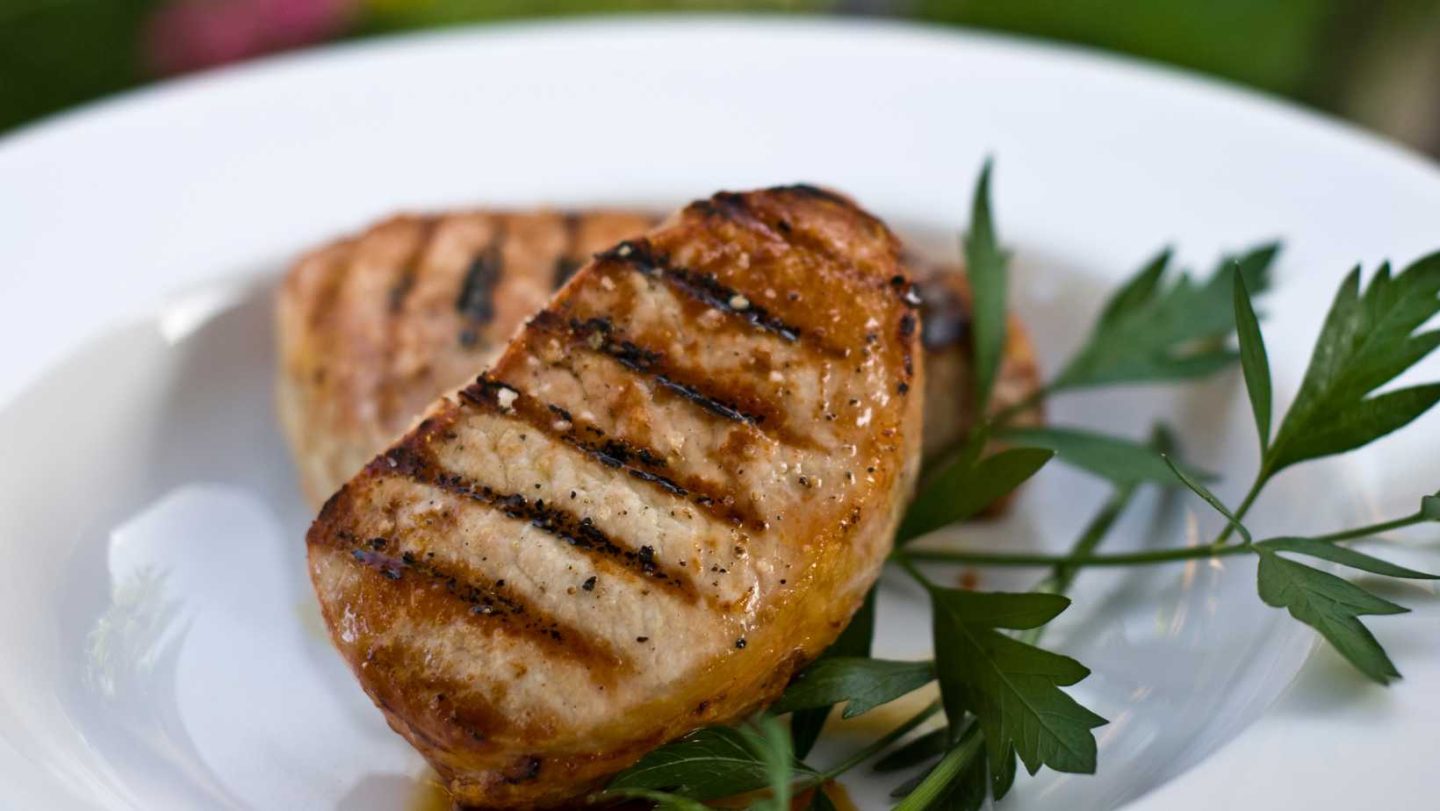
Storing and Handling Pork Chops and Chicken Breasts
Room Temperature, Vacuum-Seal Bags, and More
Both meats should be stored in the refrigerator or freezer soon after purchasing. If freezing, consider using vacuum-seal bags for the best results. Never leave either meat at room temperature for more than two hours.
Storing Tips: Lunch Meat, Ground Meat, and Deli Meat
Processed meats like lunch meats, ground meat, and deli meats should also be stored in the refrigerator and used within their use-by dates.
Final Thoughts
Whether you prefer the most popular cut of pork or the leanest chicken breast, both types of meat can have a place in a balanced, healthy diet.
It’s all about choosing the right cuts, cooking methods, and just enjoying your preparations.
As always, consult with a healthcare provider or a dietitian to decide what is best for your specific nutritional needs. Happy cooking!
FAQ for Pork Chop vs Chicken Breast
Is pork a healthy white meat?
Yes, pork, particularly lean cuts like tenderloin and loin chops, can be part of a healthy diet. It’s rich in protein and provides several vitamins and minerals.
Are pork chops considered a lean meat?
Yes, particularly if they are loin chops, and most of the visible fat is trimmed.
Are pork chops more fattening than chicken?
Pork chops have slightly more fat and calories than skinless chicken breasts. However, they can still be part of a balanced diet.
How many calories in a 4 oz grilled pork chop?
A 4 oz grilled pork chop contains about 180 calories.
Are pork chops healthier than hamburger?
In general, lean pork chops have fewer calories and less fat than a regular hamburger.
What has more calories pork chops or chicken breast?
Chicken breasts generally have fewer calories than pork chops.
Is pork chop or chicken better?
Both have their advantages. Chicken breasts are lower in calories and fat, while pork chops provide more vitamins and minerals. The choice between the two often comes down to personal preference, dietary needs, and culinary uses.
Which is healthier pork chops or chicken breast?
Generally, skinless chicken breasts are considered healthier due to their lower calorie and fat content. However, lean pork chops can also be a nutritious choice.
